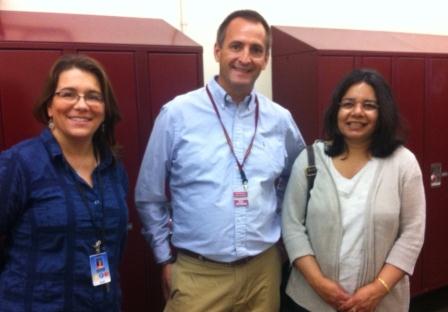Andre came into the library after school. What he wanted to know, he said, was how to make his own archery bow.
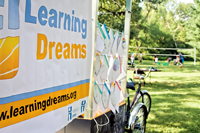 The reply went beyond the call number for a book. As it happens, a craftsman in the neighborhood makes bows. A few weeks later, Andre (not his real name) was working beside Riley Harrison at the Hack Factory, making his dream come true.
The reply went beyond the call number for a book. As it happens, a craftsman in the neighborhood makes bows. A few weeks later, Andre (not his real name) was working beside Riley Harrison at the Hack Factory, making his dream come true.
Such connections are the magic of Learning Dreams. At the library, Andre talked to a librarian who sent him to a Learning Dreams staff member. Learning Dreams located the craftsman and engaged Andre’s mother, who checked out the craftsman and gave her okay. Along the way, Andre’s mom got the chance to talk about her own learning dreams.
Learning Dreams is a concept or approach more than a program. It focuses on connecting families with the whole local learning ecosystem beyond schools–community centers, libraries, museums, businesses, employment centers and more. Now nearing its twentieth year, Learning Dreams continues to evolve, shape-shifting to meet current needs and opportunities.
Its latest collaboration is with Hennepin County Library. As libraries everywhere are changing, they are becoming curators of learning as well as books. In Hennepin County, they are putting “learning-dreams thinking” to work to create a vision of things to come.
“We’re meeting more parents,” says East Lake librarian Katherine Debertin. “Andre has been coming to the library for a long time, but now he brought his mom to meet me–he said, ‘I want everybody to know each other!'”
The initial focus at the East Lake library was to engage Learning Dreams to strengthen the Homework Hub program. Parents have turned out to be a big part of the equation.
“Parents are children’s best and first teachers, and they are at least as critical to school success and graduation as getting homework done,” says division manager Ali Turner of Hennepin County Library. “Learning Dreams is a new way for us to engage families in the learning process and support them in support of their children’s school success.”
Debertin says Learning Dreams also helps her staff respond to the neighborhood more spontaneously. A book club formed for Somali-born parents who want to learn English. One girl’s interest in cooking led to a connection with a chef; suddenly the library had 12 young people showing up for a cooking class that lasted several weeks.
Knowledge in neighborhoods
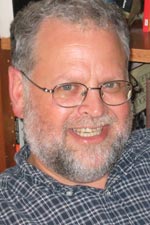 Jerry Stein developed learning-dreams thinking in the 1990s when he was asked to help design a tutoring program for kids in a public housing community.
Jerry Stein developed learning-dreams thinking in the 1990s when he was asked to help design a tutoring program for kids in a public housing community.
“I had this realization,” he remembers. “I told the group that if the kids’ families and communities love learning, it will work…otherwise it’s a waste of time. So, then the question becomes, ‘What do people love learning about, or what would they love learning about if they had the chance?'”
Stein had written his dissertation on the U.S. philosopher and educator John Dewey (1859-1952). Dewey is best known for creative school innovation, but he changed course late in life to focus on the “educative community.” Stein began to focus on the educative community of the families he was working with. He ended up developing a program called Neighborhoods Educating Themselves, or NET.
“It was not the best name,” Stein chuckles, shaking his head. “The question we asked when we went out to visit people was, ‘What’s your learning dream?’ That did it. That got people interested and thinking. It just took me awhile to realize that Learning Dreams was the real name and then change it.”
The results of the first project were hopeful. While working with a small group of parents to identify and pursue their own learning dreams, all got involved in their neighborhood school. Meanwhile, the truancy rate of their children fell to zero and their academic performance improved.
Dreams on the move
The learning-dreams approach “takes sole,” Stein has punned for years. By that he means the soles of his and many other feet hitting the pavement, going out to meet and talk to people in their neighborhoods and homes.
The history of social work cannot be told without including settlement houses, bricks-and-mortar centers built in the late 1800s and early 1900s in poverty-stricken urban neighborhoods, where people could access the assistance they needed. A dream of Stein’s was to create an “unsettlement house” that would make those resources mobile.
When Stein met Jack Becker from Forecast Public Art, the Unsettlement House became a reality. It was a trailer that could be pulled by a vehicle, equipped with Learning Dreams supplies for staff and volunteers wherever the trailer parked.
Next came the Dreamcycle, a nimbler trike-powered kiosk that can meet people almost anywhere–on street corners, in parks, at fairs, outside libraries. In 2012 it spent time at the Minnesota State Fair, then appeared in the Hennepin County Government Center in conjunction with a month-long exhibit. Passersby stop to talk to a Learning Dreams volunteer and fill out colorful cards that say, “I want to learn . . .” followed by a cloud-shaped space. Anybody who fills out a card gets a follow-up call or email, often the same day, with information about places to learn their dream, from yoga to playing the flute to learning to drive, near their home or neighborhood.
Learning Dreams continues to make its way around the state. It spent two years in Worthington and more recently two years in St. Paul, collecting people’s learning dreams and helping them find local, accessible resources to make those dreams come true. It has partners as far as Belfast, Ireland. It can be applied or adapted anywhere. Now Stein is excited about the potential of the library partnership, especially as results from the first year roll in.
“Libraries are one of our nation’s most revered systems of learning,” he says. “The library system can be as instrumental in transforming learning now as it did in its earliest charter. Learning Dreams and the libraries share similar missions and fundamental purposes. Everybody who cares about learning cares about libraries.”
The slogan of the new partnership is “Bring your dreams to the library!” At the same time, libraries are learning how to bring library thinking out into the community. Learning Dreams staff can show families how they have immediate and direct online access to library staff through Ask Us–the app and text access are available to anyone.
“You can really ask just about any question of the library and we at least know where to get started or who to call,” says Turner.
Libraries dream, too
Now the partnership has got the librarians exploring their own learning dreams. When East Lake began putting Learning Dreams to work on its Homework Hub program, everybody in the library got involved.
“Learning Dreams work included all of us, not one or two people on the staff,” says Debertin. “We’re all part of this together.”
That includes volunteers, Turner adds.
“Our work with Learning Dreams has provided a unique way for volunteers, tutors, and staff to tap into their own learning dreams,” she says. “It gives us all fresh empathy for that tingly feeling of curiosity and wanting to learn something new. It has transformed our collective approach to welcoming and supporting students!”
Story by Gayla Marty | Photos courtesy of Learning Dreams | Spring 2013
Working in the achievement gap
Minnesota, long known of its high quality educational system from kindergarten through college, now has one of the nation’s widest achievement gaps–the term used to describe the difference in academic performance between groups by ethnicity. It’s a problem that spells trouble for the state’s future, from the employment, health, and wellbeing of individuals to projected workforce retention, tax base, quality of life, reputation, and the resilience of almost every facet of society.
The question is not whether anything is being done about the achievement gap. A lot is being done–so much, and in so many places, by so many organizations, that the first question is how to identify efforts and how to tell what is working.
At President Eric Kaler’s inauguration in 2011, he pledged that the University would tackle the state’s distressing achievement gap. After a series of listening sessions on campus and consultations in the community, the president designated the College of Education and Human Development to lead the University’s efforts to close the gap.
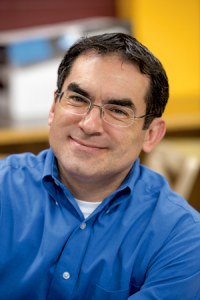 Enter Michael Rodriguez, an associate professor of educational psychology who specializes in measurement. His area of expertise, psychometrics, is a small field, while the demand for it–especially in education–is huge.
Enter Michael Rodriguez, an associate professor of educational psychology who specializes in measurement. His area of expertise, psychometrics, is a small field, while the demand for it–especially in education–is huge.
In January, Rodriguez was appointed to a new position devoted to addressing the achievement gap–the Campbell Leadership Chair in Education and Human Development. In his new role, Rodriguez will support ongoing work to reduce the gap, expand U-wide collaboration, and advise President Kaler on the best ways to improve educational access and success.
“People use ‘achievement gap’ as an umbrella term,” says Rodriguez, “recognizing that there are many gaps–resources, access, professional development, teaching, ethnic, gender, language.” There is even a gap in the belief that things can change.
Rodriguez is not deterred by vast quantities of complex data. All those numbers give him energy.
“We lack good information about what kids can and can’t do,” says Rodriguez. “Unless you have good information to make useful decisions, more money isn’t going to necessarily help.”
Rodriguez has worked in classrooms with teachers to improve assessment practices, with states to make tests more accessible, and with nations like Guatemala to develop their educational measurement systems. He has become a familiar face in Minnesota’s largest school district offices as well as rural districts with large immigrant populations, such as Long Prairie. In the process, he has come face to face with some shocking statistics.
The Minneapolis-St. Paul metropolitan area presents a unique environment in which to make significant progress. Many of the school districts where the gap is largest are located within a 20-mile radius of the Twin Cities campus. CEHD now has working partnerships in place in many of them through such initiatives as the Teacher Education Redesign Initiative (TERI) and the Center for Applied Research and Educational Improvement (CAREI).
While Rodriguez’s ongoing work has already placed him in the midst of gap-related efforts, so does the work of many others on the college faculty. When prompted to consider the chair, Rodriguez thought long and hard. In the end, he became convinced his background was a good match for tackling the problem at this point in time.
“We need to understand the scope, breadth, and depth of what we do,” he says. “I want to do this in a way that makes it manageable.”
To succeed, Rodriguez will have to apply all the knowledge, skills, and resources he can muster. His first role is networking. Beginning with CEHD and then branching out across the campus and beyond, he will lead an audit of activities aimed at closing the achievement gap. Providing coordination will become more important as the work develops.
Building a culture of evidence
Rodriguez is known for his energy, enthusiasm, creative ideas, and his proven ability to network and form partnerships. In his new role, he will draw upon all of that and a lifetime of Minnesota experience. He’s a fifth-generation Minnesotan raised in St. Paul, with family ties in Osakis. After graduating from high school in Woodbury, he majored in psychology at the University of Minnesota-Morris, then prepared to teach elementary school. Instead, he finished a master’s in public policy with the late John Brandl, legislator and civic leader, as his adviser, and went to work for the Wilder Foundation.
By the time Rodriguez decided to pursue a doctorate, he knew that the University’s top-ranked Department of Educational Psychology was where he wanted to work one day. He left the state to draw from the perspectives and strengths of another leading program at Michigan State University before returning to win his dream job in Minnesota. Today he is one of only two educational measurement faculty in Minnesota, teaching in the only doctoral program in the world that includes statistics education.
“John Brandl said, ‘What we know doesn’t always inform what we do, and we have to fix that,'” Rodriguez says. “Every course I teach has that component–improved measurement for improved decision making. What I hope to do in the Campbell Chair is to keep building a culture of evidence.”
Story by Gayla Marty | Photo by Greg Helgeson | Spring 2013
Exergaming for health — and better grades
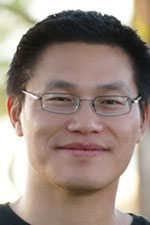 This year, students at Anne Sullivan Elementary School in Minneapolis have some new exercise equipment. Their fitness room got an exergaming lab.
This year, students at Anne Sullivan Elementary School in Minneapolis have some new exercise equipment. Their fitness room got an exergaming lab.
Exergaming exercise-based video games–in the new lab include eight Wii exercise stations and one Xbox Kinect exercise station. Teachers have also incorporated exergaming activities such as Dance Dance Revolution in physical education activities in the gym.
The new lab is the result of a collaboration led by Zan Gao, an assistant professor in the School of Kinesiology. Gao has been researching the effects of exergaming on childhood obesity. Support for the exergaming lab came from Sullivan Elementary,
Minneapolis Public Schools, and the University of Minnesota.
Gao led a study published last year that showed interactive dance games increased
urban children’s physical activity and behavior. In another study working specifically
with Latino children, Gao and his colleagues found that exercise based on Dance
Dance Revolution improved cardiorespiratory endurance as well as math scores
over time.
His research is drawing attention. Gao was invited to be the keynote speaker at a
research symposium of the American College of Preventive Medicine this winter, to
an audience of primary-care physicians, pediatricians, and medical school professors.
See the KSTP story below and read more on Gao’s research.
Continue reading “Exergaming for health — and better grades”
Congratulations to Gillian Roehrig, ASTE 2013 Award II: Outstanding Mentor of the Year
It gives the STEM Education Center great joy to share this news that Gillian Roehrig has been selected for the Association for Science Teacher Education (ASTE) 2013 Award II – Outstanding Mentor of the Year. This is a great honor and achievement for Gillian, the STEM Education center, and the University of Minnesota. We would like to thank Barbara Billington for the nomination, graduate students (past and present) and faculty for their wonderfully crafted letters of support which reached ASTE just in time to make this effort possible.
Gillian receives this award at the Annual ASTE International conference awards and business luncheon on Saturday, Jan 12, 2014 in San Antonio, Texas.
Please, join us in celebration from now till January 2014 !!!!
Legacy of a dream: Innovative scholarships, combined with tested federal TRiO programs, are helping first-generation college students close the gap
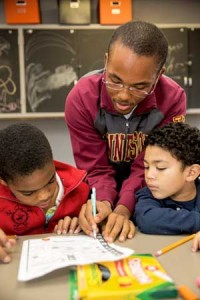 Philip Binns has a clear memory of the day in 2005 that Upward Bound came to his house. He was a ninth grader at North High in Minneapolis. His family had plans to go to the gym together, and that didn’t happen every day. But when Minerva Muñoz knocked, his mother opened the door.
Philip Binns has a clear memory of the day in 2005 that Upward Bound came to his house. He was a ninth grader at North High in Minneapolis. His family had plans to go to the gym together, and that didn’t happen every day. But when Minerva Muñoz knocked, his mother opened the door.
“We were filling out forms and I was thinking, ‘I could be at the gym right now!'” Binns remembers.
Upward Bound never let up. For the next four years, it brought Binns (in photo) to the University of Minnesota after school at least one day a week–more when his grades slipped. It also allowed him to earn a scholarship called “I Have a Dream” that was put in escrow and would be paid out, year by year, if he became the first in his family to go on to college.
The first two years of “UB” did not look promising. Binns, naturally quiet, preferred to fly under the radar, whether at school or the U.
“I felt like quitting–I actually failed sophomore English,” he admits. “I saw it as a chore. My parents made me do it.”
Through Upward Bound, Binns came to the campus each summer for rigorous classes in English and math, introductory Latin, and ACT prep work. One year the group camped for five days near Ely, Minnesota, canoeing, portaging, and learning to set up and take down a tent. They had no electronics, showers, or mirrors. Binns got to know his UB classmates and himself.
The Dream Scholarship encouraged his parents, too.
“I kept talking to him about the bigger picture,” says his mother, Verna Binns. “It was a huge stepping stone.”
Slowly Binns started thinking about the future. As a little kid, his dream job had been to work at Camp Snoopy; now, sneaking a look at late-night TV while his mom worked two jobs, he noticed that the dad on The Brady Bunch was an architect.
In 2009, Philip Binns entered the University as a Dream Scholar enrolled in TRiO Student Support Services. A whole new world opened up. He explored career ideas, made friends, took racquetball, and used a break to learn Spanish in a three-week program in Mexico. He got an A in public speaking. As part of his First Year Experience course, he played the lead in an adaptation of A Lesson Before Dying.
When Binns declared a youth studies major, he began to volunteer. Over the past three years he has tutored fourth graders in math and high school juniors and seniors in history and English. This year he works with grade-school kids in an after-school program not far from where he grew up.
“They’re curious and honest and they don’t care how you feel about their questions,” Binns says with a smile. “My favorite part is debunking the myths.”
Stay in school, he tells them. Don’t do drugs. Now in his senior year, he’s aiming for graduate school in public health.
Dream for the nation
Upward Bound was the first in a “trio” of innovative efforts that began with the Educational Opportunity Act of 1964 to address the social and cultural barriers to education. It arrived at the University of Minnesota-Twin Cities in 1966 and has operated ever since. Collaborating high schools are those with the state’s poorest youth–currently South, North, and Edison high schools in Minneapolis.
Bruce and Sharyn Schelske went to work for Upward Bound when it came to Minnesota, at first part-time in college. Their compassion for students and drive to fulfill the program’s vision soon put them at the national forefront of TRiO program leadership and innovation.
“It was so hard to keep those kids,” says Bruce Schelske. Family instability, responsibility for younger siblings, peer pressure, fear of standing out, and especially the lure of low-paying summer jobs reduced cohort after cohort. When Upward Bound grads made it to college, many lacked the informal network and confidence to stay. The Schelskes and their staff became experts in the forces undermining education and in ways to keep kids in school.
“You see the faces of those who made it, who graduated, who did what they had never dreamed was possible–and then every exhausting thing is worth it,” says Sharyn Schelske.
When a second TRiO program was created to support low-income and first-generation students in college, the Schelskes helped to apply and bring it to Minnesota. TRiO Student Support Services opened at the U in 1976, serving students who enrolled from across the state.
Despite accumulating evidence of lives transformed by TRiO programs, threats of cuts joined the list of battles waged by the staff in the 1980s. A newspaper article about the TRiO programs at the University described their successes, their potential, and their daunting challenges.
Then a pair of allies appeared.
Inspiring commitment
Karen Sternal had read the article about Upward Bound and handed it to her husband, Bill Lahr. He had been following the work of Eugene Lang, a business owner and philanthropist in New York who had created “I Have a Dream” scholarships as an incentive for low-income kids to graduate from high school and then college.
Lahr owned a Minnesota-based family business and was a long-time contributor to causes close to his heart–education chief among them. Now he wanted to do more. Lahr and Sternal liked what they read about Upward Bound at the University of Minnesota.
“Grants for education were being cut,” Sternal says. “By coming forth as an outsider and saying we wanted to give our support, it put Upward Bound in a stronger position to keep or get other funding they needed.”
Lahr and Sternal worked with the University to create the Minnesota “I Have a Dream” Scholarship program for students in Upward Bound, learning from Lang’s program. Taking its name from Dr. Martin Luther King, Jr.’s 1963 speech during the March on Washington for Jobs and Freedom, the scholarship inspired students to envision a future of their own.
“We had been doing this for 15 years,” Sharyn Schelske recalls, “and it was our dream, too, that we could find a way for kids to complete their degrees and fulfill what Upward Bound was created to do.”
The first scholarships were awarded in 1991. At first, Upward Bound students had to complete applications for a set number of scholarships. But reading their essays, Sternal was stopped cold.
“I saw how hard-working these students had to be just to complete a high school degree,” she says. “I said, ‘All of them deserve the scholarship–there is no way I can be the judge. We have to figure out a different way to do this.'”
A model for closing the achievement gap
Joyce Bell first heard about Upward Bound from a friend in the late 1980s.
“She told me they paid poor kids for good grades,” Bell remembers. “I thought, ‘Well hey, that sounds like me.'”
Unlike Philip Binns, Joyce Bell did not come from a family that could support her academically. School was an escape, and Upward Bound became a lifeline, especially in the summers she spent in and around the U.
“More than anything I needed a place to belong and a place to feel safe,” says Bell.
She didn’t know anyone who had gone to college but, with Upward Bound assistance and the promise of a Dream Scholarship, Bell applied near and far. She attended the University of St. Thomas in St. Paul, and then–recruited as a junior into the McNair Scholars graduate school preparation program–she came back to the University of Minnesota for a doctorate in sociology. In one of the most competitive academic job markets ever, Bell was hired at the University of Georgia and then got a tenure-track job in her field at the University of Pittsburgh. She won the Minnesota TRiO Achievers Award in 2008 and a national TRiO Achievers Award in 2011.
Bell has been asked how she did it. Once in a graduate school course, the professor challenged her argument about poverty and education by asking, “What makes you able to do it and not them?” It is a question, she says, driven by the idea of the American dream.
“What I can say without a doubt is that I didn’t have any more drive than most of the people around me, I’m not any smarter, I wasn’t destined to go to college, I didn’t have any magical bootstraps to pull myself up with,” Bell says. “I had intervention. I had Upward Bound and I had McNair. I had people and programs in my life that pointed out opportunity and made it clear how to take advantage of it.”
Bell is ever conscious of the privilege of working in the world of ideas, with the ability to develop research around emerging questions. Despite the pressures and stress, she loves teaching and dedicates time to mentoring first-generation students and students of color.
“That is part of closing the loop that Upward Bound set up,” she says, “and I take that role seriously.”
As a researcher, Bell has looked at the design, methods, and results of the TRiO programs. Even students who participate in Upward Bound and Student Support Services without completing degrees experience significant gains. With data and expertise approaching the 50-year mark, the programs serve as an important foundation in ongoing efforts to address the problem of poverty and the educational achievement gap.
“These programs work!” Bell says. “They are vastly underfunded, but they have the ability to make a significant difference in the lives of students they are able to serve.”
Navigating change
Another strength of Minnesota’s TRiO programs has been its staff. For nearly 40 years, the Schelskes honed methods, kept a lean structure, mentored staff, and adapted to changes in the population they served and the culture at large.
Again and again, they showed legislators, skeptics, and funders the accumulating data and mounting return on investment. Over the years, they played a role in building the strong bipartisan support so essential to the programs’ endurance.
When General College, longtime TRiO base of operations, closed in 2005, they shepherded the programs into a new home within the redesigned College of Education and Human Development in new offices a few blocks away.
When the Schelskes retired in 2012, they passed the reins to a new generation of leaders. Minerva Muñoz, who has recruited Philip Binns and scores of other students into Upward Bound, partners with Amy Kampsen in Student Support Services and Anthony Albecker heading McNair. Consistent with TRiO’s commitment to employ a staff that reflects the population served, Muñoz, Kampsen, and Albecker are all first-generation college graduates, and Muñoz and Albecker are TRiO program alumni. In offices on the ground level of Education Sciences, the office is a beehive of activity overlooking the city skyline and the Mississippi River–a connection to the communities from which students come and the world of opportunity beyond the U.
“We are really pleased that we were able to lay a foundation for the next generation and develop a model that they can work with,” says Sharyn Schelske.
Another change came with the loss of Minnesota’s Dream Scholarship champion Bill Lahr, who died in 2004. But Karen Sternal’s commitment to the vision they shared and to Upward Bound students has not wavered.
The next generation
A few years after the Dream Scholarships were established, the Upward Bound staff worked with Lahr and Sternal to create a celebration to recognize the students’ accomplishments and spur them on. It was so successful they have held it each year. Every Dream Celebration is different, but every one produces a colorful outpouring of young energy and joy.
On a long summer evening in 2012, the McNamara Alumni Center served as the backdrop for the 22 newest Dream Scholars–those Upward Bound students fresh out of high school and getting ready to go their separate ways to college–to show and tell the difference their time together has made. Next to them were Dream Scholars in various stages of their college programs and eight who had just reached their goal of graduating from college, with new dreams to describe and explore.
In the audience were high school students still in Upward Bound aspiring to be Dream Scholars, and parents, friends, and staff.
“I have a dream,” one new Dream Scholar said, “of taking my family’s name to college.”
“Upward Bound was my healthy habit,” said another–Ahmed Ahmed Ali, who arrived in Minnesota at age nine without a word of English. “Without those summers in Upward Bound, I would have been brain-dead! UB was my caffeine!”
There were speeches, a skit, a video, laughter, and tears.
“When I attend a Dream ceremony, it is a real private moment to see the students,” Sternal reflects. “They might thank me, but it’s them. They haven’t done this because it was easy!”
What troubles Sternal the most is the unmet need. Upward Bound, she believes, should be in every high school.
“This is like a little pebble, and what we need is a wall!” says Sternal. “As an individual, this is what I can do. As a society, we need to do more. If we don’t have an educated populace, the gulf between us all will just get larger, and that is not healthy for a republic.”
Philip Binns has joined Joyce Bell and many more Dream Scholars envisioning and creating a better future. In addition to his academics and community service, this year he became one of the first co-chairs of TRiO’s new student board.
“Every one of these students makes a difference,” says Muñoz. “It’s our job to make the dream for all of us come true.”
To learn more about TRiO programs at the University of Minnesota, see www.cehd.umn.edu/trio.
Story by Gayla Marty | Winter 2013
Open-book test: CEHD is exploring new ways to deliver high-quality course materials at lower costs
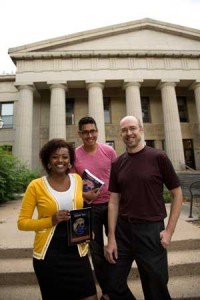 Each year, college students spend an average of nearly $1,200 on course materials.
Each year, college students spend an average of nearly $1,200 on course materials.
Dave Ernst decided to do something about it. As the director for academic and information technology in the College of Education and Human Development, Ernst is always looking for ways to increase access for students, and cutting costs is obviously one of them.
When a national student group called for more use of “open” textbooks, Ernst paid attention. Open textbooks, they said, would save students an average of 80 percent of current costs.
The high cost of textbooks has fueled a growing movement to look for alternatives. Open textbooks are published under an open license, such as Creative Commons, which allows students to get free or low-cost versions of their textbooks either in print or digital format. The cost can range from a significant cut to free.
“There is a growing body of quality open textbooks available,” says Ernst. “Foundations and even state governments are funding their development because they see the potential to significantly cut costs for students.”
But how is quality determined? Would professors really use them for a course?
Ernst talked to colleagues on and off campus, including bookstores and technology groups. He talked not only to students but also to the faculty. Irene Duranczyk, an associate professor in CEHD’s Department of Postsecondary Teaching and Learning, was already looking into open textbooks for her courses.
“Faculty members share student concerns about high textbook costs,” says Duranczyk. “We are willing to consider high-quality, affordable alternatives like open textbooks.”
Ernst asked CEHD faculty members to help review open textbooks so quality would become clearer, making it easier for others to adopt.
The Open Academics online catalog launched in April with a list of 84 open textbooks currently in use in classrooms across the country. It was the first and only tool of its kind at a major research institution. Within hours of the catalog’s launch, Ernst began to get email and calls. Since then, the catalog has received more than 26,000 visits from 138 countries and territories. Educators around the globe have offered to help.
Ernst began recruiting faculty to start reviewing open textbooks over the summer and to potentially adopt them for upcoming courses. Duranczyk was one of those who signed up immediately to review a text. She is analyzing a statistics book.
“The catalog makes it easier to consider open textbooks,” says Duranczyk. “I’ll be able to find peer-reviewed options in one place.”
Meanwhile, Ernst and his staff are also working with the CEHD faculty and University Libraries to cut the cost of course packets–collections of articles and other materials hand-picked by faculty to supplement or use instead of textbooks. They’re running two case studies to see just how much money can be saved by digitizing the materials for CEHD courses.
Read more about the Open Academics textbook catalog.
In the photo: Which is the open textbook? Both. CEHD grad student José Palma holds an educational psychology textbook in print, while senior Addis Tesfaye holds the same one on an iPad. Dave Ernst, right, initiated the Open Academics textbook catalog.
Story by Gayla Marty | Fall 2012
A trifecta for kids: How three new federal grants will help build Minnesota’s infrastructure for early education
The news came over a few days in December 2011: Three grants for early learning from the U.S. Department of Education totaling $88 million were coming to Minnesota.
The Race to the Top, Promise Neighborhoods, and Investing in Innovation (i3) grants focus on children at risk. Their strategies vary, but all aim to benefit children statewide by building an infrastructure for early education.
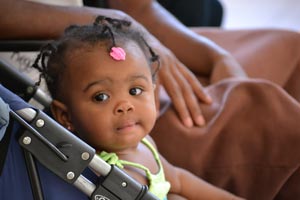 “We have that infrastructure for K-12, and we have it for higher education, but preschool kids haven’t historically been part of public funding for education,” says Karen Cadigan, Ph.D. ’08, director of the Office of Early Learning in Minnesota’s Department of Education. “There were two reasons for that–we didn’t understand how much important learning takes place before kindergarten, and we didn’t understand the public benefit from having young children ready for school. Now we know that early education is as important as elementary school, if not more.”
“We have that infrastructure for K-12, and we have it for higher education, but preschool kids haven’t historically been part of public funding for education,” says Karen Cadigan, Ph.D. ’08, director of the Office of Early Learning in Minnesota’s Department of Education. “There were two reasons for that–we didn’t understand how much important learning takes place before kindergarten, and we didn’t understand the public benefit from having young children ready for school. Now we know that early education is as important as elementary school, if not more.”
Megan Gunnar, director of the Institute of Child Development in CEHD, emphatically agrees.
“Experiences early in life affect the quality of the brain’s architecture, creating a firm or weak foundation for all learning that comes later,” says Gunnar. “Studies of early development show the achievement gap is in place long before children reach school. To close that gap, we need to invest in the development of our youngest citizens. These three grants are an excellent start.”
The grants could not have come at a better time. The Minnesota Early Learning Foundation–a coalition of top business leaders, early-education specialists from the University, and early-education providers–was about to sunset. The group was formed because of accumulating research that shows the powerful long-term return on investment for dollars spent on early learning–and the staggering cost of failing to invest in young kids. Yet those programs are often among the first to be cut in hard times.
A pilot project funded by MELF in fact played a big role in attracting the federal dollars to Minnesota by focusing on two key initiatives: developing a voluntary four-star rating system for early-education programs, and providing scholarships for children to attend the best programs to ensure access. Minnesota was the first state to tie scholarships to such a rating system.
“These grants were not awarded by lottery,” says Art Rolnick, MELF organizer, former Federal Reserve vice president, now a University fellow. “We won them based on years of hard work and commitment by many early-childhood advocates around the state. But the trifecta–that’s really something.”
The College of Education and Human Development is the recipient of one of the grants–the i3–as part of an interdisciplinary collaborative. For all three grants, CEHD played a role in the proposals and will be engaged in implementation.
“Our funders are partnering with us in the belief that things can really change, so the name of the game is outcomes,” says Sondra Samuels, CEO of the Northside Achievement Zone in Minneapolis, recipient of one grant and a site for another. “Our anecdotal stories don’t cut it.
“We partnered with the U’s Center for Early Education and Development because our funders have confidence in the measures they are helping us to develop,” says Samuels (in photo). “All our partnerships are important, but our other partnerships succeed or fail based on the effectiveness of the evaluation and accountability system the University is helping us to create.”
CEED’s role in both the Race to the Top and Promise Neighborhoods grants is strengthened by its presence at the University’s Urban Research and Outreach-Engagement Center (UROC) in North Minneapolis.
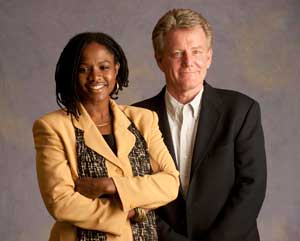 Race to the Top Early Learning Challenge grant: $45 million over five years to help build Minnesota’s infrastructure to improve outcomes for preschool children
Race to the Top Early Learning Challenge grant: $45 million over five years to help build Minnesota’s infrastructure to improve outcomes for preschool children
This grant will expand efforts to improve quality of early childhood programs, as well as access to those programs for high-risk children, in all areas of the state. CEHD’s Center for Early Education and Development (CEED) helped obtain the grant and will have a role in implementing it.
“You have a lot of children who are living in poverty in both urban and rural situations,” says Scott McConnell (in photo), professor of educational psychology and a CEED faculty affiliate. “The goal is to improve school readiness, to improve outcomes, for all Minnesota’s young children.”
The Early Learning Challenge grant will build a statewide infrastructure to help families. It will focus some of its work in Hennepin, Ramsey, Blue Earth/Nicollet, and Itasca counties. Included is Minneapolis’s Northside Achievement Zone (NAZ), which has the state’s highest poverty rate.
It will mean, for example, a new chance for three- and four-year-olds to enroll in high-quality preschools, where they will have sustained access to books, educational toys, and skilled teachers. A system that rates early childhood programs and reports findings to parents will be extended statewide so all parents can find high-quality programs. The grant will also fund scholarships for low-income children, plus monitoring of preschools and efforts to improve those of lower quality.
Promise Neighborhoods grant To the Northside Achievement Zone (NAZ), a collaborative that includes CEED, Minneapolis Public Schools, and 50+ community organizations: $28 million over five years; focuses on families to boost children’s success
This initiative is an all-out drive to give children the support they need to get ready for college, starting at birth. That includes ensuring access to strong schools, engaged and empowered families, comprehensive support for academic success, and building a culture of achievement.
One key to the effort is ensuring an engaged and nurturing home environment. To do that, NAZ will help parents and other family members remain active players in their children’s lives. NAZ parents will work with peer coaches to get ongoing assistance in setting and reaching goals for their children and families, and finding existing resources. As families are introduced to neighbors with like-aged children, they will find new friends who share aspirations.
Whatever the need, Promise Neighborhoods aims to reach 1,200 families in the NAZ, according to McConnell. Children who may not otherwise have had the chance will now find early care and education settings “that receive more resources to improve the quality of care, and that will become part of an ongoing quality improvement system,” says CEED co-director Amy Susman-Stillman.
“Children will benefit because their caregivers will be more knowledgeable and skillful about how to prepare them for kindergarten,” she says.
Investing in Innovation (i3) grant: To the Human Capital Research Collaborative (HCRC), a partnership of CEHD, the Humphrey School of Public Affairs, and Federal Reserve Bank of Minneapolis, with 10 education and nonprofit partners; $15 million over five years to expand the Child-Parent Center model, a proven preschool-through-third-grade intervention, in three states
The Child-Parent Center (CPC) education program began in Chicago in 1967, shortly after Head Start. CPC gives children in low-income neighborhoods an intense, continuous system of educational and family support.
“It starts with a very strong preschool program that emphasizes early literacy and parent involvement,” says project director Arthur Reynolds, Institute of Child Development professor and HCRC co-director. “Kids will see parents more at school, interacting and attending workshops with other parents, volunteering in the classroom, and furthering their education and career training. These are key to promoting school-family partnerships.”
Comprehensive services include small classes, professional development, and curriculum alignment. An evaluation of the implementation and impact of the program will be conducted.
Reynolds directs the Chicago Longitudinal Study, which began in 1985 and established CPC’s effectiveness. It helped convince the U.S. Department of Education that investment in this kind of effort yields high dividends in terms of productive citizens down the road.
“Cost-benefit analysis indicates a return of $8 to $11 per dollar invested in the program, which is among the highest of any social program,” Reynolds notes. “The duration and intensity of this exemplary intervention will enhance excellence in school and reduce the large achievement gaps that exist by family socioeconomic status.”
Read more about the Investing in Innovation grant in “How i3 came to Minnesota.”
Story by Gayla Marty, summer 2012. Adapted from “Three-pronged push for children,” by Deane Morrison, in UMNnews.
Top photo by Jillian Kahn, Northside Achievement Zone. Other photo of Sondra Samuels and Scott McConnell, by Scott Streble, courtesy of UROC.
Student Tutors in Prepare2Nspire Math Program Add Up to Success
The University of Minnesota STEM Education Center’s Prepare2Nspire tutoring program incorporates cutting-edge graphing calculator technology and old-fashion, face-to-face interaction to inspire eleventh and eighth- grade students to continue their math studies.
Read More at http://www.uroc.umn.edu/press/stories_tutors.html
Buturian awarded International Teaching and Learning Fellowship
 Linda Buturian, Senior Teaching Specialist with Postsecondary Teaching & Learning was awarded an International Teaching and Learning Fellowship for 2013-14 with the UM’s Global Programs Strategy and Alliance (GPSA). She is one of 14 Fellows who will be furthering their efforts to Internationalize the Curriculum, and foster collaborations around global issues.
Linda Buturian, Senior Teaching Specialist with Postsecondary Teaching & Learning was awarded an International Teaching and Learning Fellowship for 2013-14 with the UM’s Global Programs Strategy and Alliance (GPSA). She is one of 14 Fellows who will be furthering their efforts to Internationalize the Curriculum, and foster collaborations around global issues.
Diane Tedick and Laurent Cammarata Awarded 2013 ACTFL-MLJ Paul Pimsleur Award for Research in Foreign Language Education
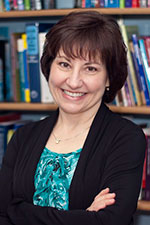 Curriculum and Instruction Associate Professor, Diane Tedick (pictured) and co-author Laurent Cammarata (a Ph.D. graduate of the Second Languages and Cultures track) have just been awarded the 2013 ACTFL-MLJ Paul Pimsleur Award for Research in Foreign Language Education for their article titled “Balancing content and language in instruction: The experience of immersion teachers,” published in 2012 in the Modern Language Journal, and for their contributions to research in content-based language instruction and immersion education.
Curriculum and Instruction Associate Professor, Diane Tedick (pictured) and co-author Laurent Cammarata (a Ph.D. graduate of the Second Languages and Cultures track) have just been awarded the 2013 ACTFL-MLJ Paul Pimsleur Award for Research in Foreign Language Education for their article titled “Balancing content and language in instruction: The experience of immersion teachers,” published in 2012 in the Modern Language Journal, and for their contributions to research in content-based language instruction and immersion education.
The article investigates immersion teachers’ lived experience with content and language integration. Research on immersion teaching shows that immersion teachers tend to focus on subject matter content at the expense of language teaching. The response to that research has often entailed suggestions for teachers on how better to integrate language and content in their instruction. However, missing from the discussion are rich descriptions of the actual experiences that immersion teachers have as they attempt to balance language and content in their teaching. After analyzing the results of the study, Tedick and Cammarata share findings and potential reforms to increase the language learning potential of immersion programs.
For more information about the award, please visit The American Council on the Teaching of Foreign Languages’ website.
Hatch joined by colleagues in presenting at August’s Teaching Enrichment Series

Jay Hatch, Associate Professor Postsecondary Teaching & Learning and Leon Hsu joined Kent Kirkby Associate Professor/Teaching
Earth Sciences, Department of Geology and Geophysics and Ken Leopold Professor, Chemistry, in developing and facilitating a two-part workshop entitled, “Teaching Non-Majors in Large Enrollment Courses: An Instructor’s Guide to Engaging a Diverse and Multidisciplinary Audience”. The workshop was part of the August Teaching Enrichment Series, hosted by the University’s Center for Teaching and Learning. Part 1 focused on frameworks for structuring such courses, while Part 2 considered strategies for teaching them.
U of M, Minneapolis Public Schools partner to develop early childhood education centers in Minneapolis
To expand access to early childhood education to Minneapolis children and families, Minneapolis Public Schools (MPS) and the University of Minnesota have formalized a new partnership. The goal is to improve the overall quantity and quality of services by working together and with community partners to establish new early childhood education centers in the City of Minneapolis, beginning in North Minneapolis immediately and eventually expanding to a second center during the next several years.
There is not enough space at high-quality facilities in North Minneapolis to meet the demand for successful early childhood education, University research recently found. This program is meeting a real need and aligns with the state’s focus on supporting all families seeking quality education for their young children.
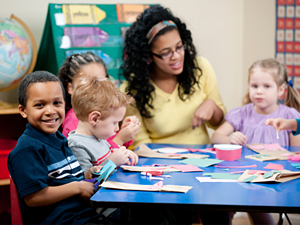 “MPS continues to make significant investments in early childhood education because we believe that it is critical to reducing and eliminating the disparities in student achievement,” said Dr. Bernadeia Johnson, superintendent of Minneapolis Public Schools. “I am grateful to the University for helping to elevate early childhood education and to our community partners for their long standing commitment to young children and their families. ”
“MPS continues to make significant investments in early childhood education because we believe that it is critical to reducing and eliminating the disparities in student achievement,” said Dr. Bernadeia Johnson, superintendent of Minneapolis Public Schools. “I am grateful to the University for helping to elevate early childhood education and to our community partners for their long standing commitment to young children and their families. ”
The partnership will support early learning “centers of excellence” that are based on the most current research and that demonstrate strong results for the children and families that participate. The program model will be based on both best-available research and evidence-based practices, and the already-established promising and proven practices of existing high-quality programs. The partnership will focus on the planning, development, and implementation of permanent sustainable solutions for children ages 0-5 in Minneapolis.
MPS will provide leadership, space, and staff–with a long-term goal of sharing this space with other community partners. The University will share intellectual capital, through research, to best support early learners; convene and facilitate a conversation to find long-term solutions for this partnership; and continue to innovate and improve the experience for young students.
“The investment we make now in Minneapolis’ young children will pay dividends in the years to come–they are our future college graduates and workforce,” said University of Minnesota President Kaler. “The U is uniquely poised to partner in this effort, with our past and current work in early childhood education as well as ongoing commitment to close the state’s achievement gap.”
MPS has a long history of partnering closely with the University’s Center for Early Education and Development (CEED) and Department of Educational Psychology faculty, and this investment will continue that tradition. Many other University resources will provide assistance to this partnership: Professor Michael Rodriguez, who is leading achievement gap efforts; the University’s Urban Research and Outreach/Engagement Center (UROC); the Human Capital Research Collaborative; and other academic departments and centers.
Minneapolis Public Schools and the U of M plan to broaden their partnership to include other community based organizations that have long been working on providing early childhood education to the children of Minneapolis. These programs, through their existing services and ongoing commitment to finding the best ways to serve young children and their families, will enrich the knowledge and bandwidth of the overall partnership such that more children reap the benefits of high-quality early childhood education.
See more on the story in the Minnesota Daily.
Lee accepts editorial board appointments
 Amy Lee, department chair and associate professor in Postsecondary Teaching and Learning has been invited to and will serve on both the Editorial Board of the Journal of Learning Communities Research and Practice and the Editorial Advisory Board of the Journal of College Teaching and Learning.
Amy Lee, department chair and associate professor in Postsecondary Teaching and Learning has been invited to and will serve on both the Editorial Board of the Journal of Learning Communities Research and Practice and the Editorial Advisory Board of the Journal of College Teaching and Learning.
Mitchell co-authors article featured in Association of American Colleges and Universities
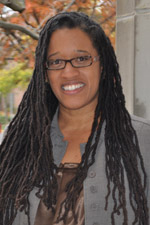
Tania D. Mitchell, Assistant Professor, Postsecondary Teaching & Learning along with Rick Battistoni (Providence College), Art Keene and John Reiff (UMass Amherst), authored the article “Programs that Build Civic Identity: A study of alumni”, which was featured in the Association of American Colleges and Universities. The article shares preliminary findings from a three-campus study of alumni of multi-term civic learning programs. Focusing on career choice and the importance of the cohort model each program utilizes, the article highlights the enduring influence of service-learning and civic engagement on college alumni. The full article can be found here.
Higbee’s work published in Inclusive Higher Education: An International Perspective on Access and the Challenge of Student Diversity
 Jeanne Higbee (professor, Department of Postsecondary Teaching and Learning) and Emily Goff’s chapter, “Widening Participation Through Integrated Multicultural Instructional Design”, was recently published in the UK by Libri in the book Inclusive Higher Education: An International Perspective on Access and the Challenge of Student Diversity, edited by Kath Bridges, Jenny Shaw, and Ivan Reid. The book discusses the inter-connectedness of recent trends in higher education, along with widening access, internationalization, equality, diversity and inclusive curriculum.
Jeanne Higbee (professor, Department of Postsecondary Teaching and Learning) and Emily Goff’s chapter, “Widening Participation Through Integrated Multicultural Instructional Design”, was recently published in the UK by Libri in the book Inclusive Higher Education: An International Perspective on Access and the Challenge of Student Diversity, edited by Kath Bridges, Jenny Shaw, and Ivan Reid. The book discusses the inter-connectedness of recent trends in higher education, along with widening access, internationalization, equality, diversity and inclusive curriculum.
Agreement with TFA to create first-ever alternative teacher training program under new Minnesota law
To ensure Minnesota’s P-12 students have the best-prepared classroom teachers, the University of Minnesota-Twin Cities and Teach for America (TFA) have agreed to create the first-ever alternative teacher training program for corps members under the Minnesota Alternative Teacher Licensure law.
Annually, a minimum of 40 TFA corps members will participate in eight weeks of localized training through the University instead of participating in one of TFA’s national five-week summer institutes. Training will include rigorous, initial preparation coursework and ongoing credit-based coursework and learning experiences during corps members’ two-year commitment to TFA.
The University retains the authority for instructional design, content and evaluation of the program, as well as the determination of candidate admission (subsequent to TFA’s rigorous recruitment and selection process), degree clearance and recommendation for licensure, according to the agreement. Once developed, the program–which is scheduled to begin in summer 2014–will be submitted for approval to the Minnesota Board of Teaching.
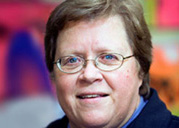 The program will be a new pathway to teaching, added to the University’s current, comprehensive preparation programs for individuals who choose teaching as a career.
The program will be a new pathway to teaching, added to the University’s current, comprehensive preparation programs for individuals who choose teaching as a career.
“The core mission of the University’s teacher preparation programs is to ensure that Minnesota’s P-12 students have the best-prepared classroom teachers, regardless of their path to licensure,” said Dean Jean Quam of the University’s College of Education and Human Development (CEHD). “This agreement outlines a plan to create our state’s first-ever alternative teacher preparation model with high standards for quality and ongoing support for teacher candidates. Given that research is a core mission of the University, we are committed to creating effective teacher preparation programs and engaging in ongoing evaluation of new and existing models.”
Under the agreement, TFA corps members’ successful completion of the new program requirements will result in recommendation for licensure and University credits, which can be applied toward attainment of the master of education (M.Ed.) degree.
This program will be the latest innovative solution from CEHD, pioneers in developing research-based teacher preparation models for the past 100+ years.
Ed Psych alum Willie Winston III recipient of Community Partners Star award
On October 10, the School of Public Health will hold its TENTH ANNUAL COMMUNITY PARTNERS CELEBRATION, at which time Willie Winston III (Ph.D. ’03) will receive the Community Partners Star award. The award recognizes individuals from the community who have gone above and beyond for their division, its students and faculty.
Davison delivered keynote address at the 2013 NIETS International Symposium
Mark L. Davison, professor in the Quantitative Methods in Education Track, Department of Educational Psychology, delivered a keynote address entitled “Policies and Practices in Large-scale Assessment in the United States” to the 2013 NIETS International Symposium in Bangkok on National Educational Testing and Assessment in ASEAN Countries.
He also delivered a pre-conference workshop entitled “Multidimensional Item Response Theory: IRTPRO.” Other speakers included the Deputy Prime Minister of Thailand, Mr. Phongthep Thepkanjana, and Dr. Gwang-Chol Chang of UNESCO. The conference was co-hosted by Dr. Somwung Pitiyanuwat and staffed by Dr. Chayut Piromsombat, both Ph.D. alumni of the Department of Educational Psychology.
Tammy Barnes, Education Minnesota, presents “Do Teachers Need Unions?”
Join us at 7:30p this Wednesday in STSS 432B!
Education Minnesota – University of Minnesota Student Chapter serves as the only professional group for pre-service teachers on campus. As a student chapter of Education Minnesota, the organization provides a united voice for public education, leadership in education innovation, dedication to students and families and an unwavering commitment to the welfare of our members. In the past, the group has put on events such as informational panels on a variety of educational topics, participated in community and educational volunteer opportunities, and provided unique insight into the world of being a teacher.
The student chapter is organizing an event called “Do Teachers Need Unions?” which will take place on Wednesday, September 18th from 7:30-9pm in STSS 432B. This presentation will allow for students to understand why there are unions in the teaching profession and how it has changed over time. Students will be able to ask questions and engage in discussion with the guest speaker, Tammy Barnes, from Education Minnesota.
In the future, the group hopes to pursue more volunteer opportunities in the education community and allow useful networking and informational sessions for pre-service teachers throughout campus. The executive board is comprised of Jessica Suppanz (ILP – Science Education) and Shawna Zielinski (Senior, future SLC Education) as Co-Presidents, Nicki Krautkremer (Senior, Elem Ed), Secretary, Savannah Green (ILP – Social Studies Education), Treasurer, and Michelle Todd, (Senior, Special Ed) Secretary. If you are interested in becoming a teacher, consider joining Education Minnesota! Email edmn@umn.edu with any interest and questions!
UMN-TC Curriculum & Instruction Department Chair Nina Asher visits TERI Partner PDS site, Roosevelt High School
The partnership between Minneapolis Roosevelt High School and UMN TERI program continues to grow and deepen as it enters its third year. Roosevelt has added seven new teachers to its staff this year, five of whom are recent graduates from UMN teacher licensure programs in Kinesiology, Second Languages and Cultures, World Languages, Science, and Social Studies.
Innovative techniques in working with teacher candidates and instructing students have crossed the partnership bridge. Math ILP Instructor, Terry Wyberg, is conducting his initial methods course at Roosevelt this fall for the second time. This year, he is collaborating with the Roosevelt math department to implement instructional techniques using the Ipad.
Roosevelt continues to be a rich site for clinical placements and the partnership continues to offer opportunity for shared efforts to improve student learning. Roosevelt is hosting ten DirecTrack to Teaching students in various classrooms such as English/Language Arts, Social Studies, Welding. Autoshop, and Band. The UMN social studies ILP has three teacher candidates placed at Roosevelt for their fall practicum. Fourteen Roosevelt staff have registered for the TERI-RHS partnership professional development action research project, focused on bettering instruction for long-term English language learners.
Finally, Roosevelt was recently noted as “Beating the Odds,” after a comparison of MCA reading test results revealed a high percentage of students were scoring at a grade level or better, despite a high number of RHS students living in poverty.
Roosevelt High School-UMN-TC Partnership Liaison, Jehanne Beaton; Terry Wyberg, CEHD Math Senior Lecturer; and Nina Asher, Department Chair of Curriculum & Instruction, CEHD recently toured RHS, met with principal Michael Bradley and visited with UMN-TC teacher candidates and graduates working on site.
